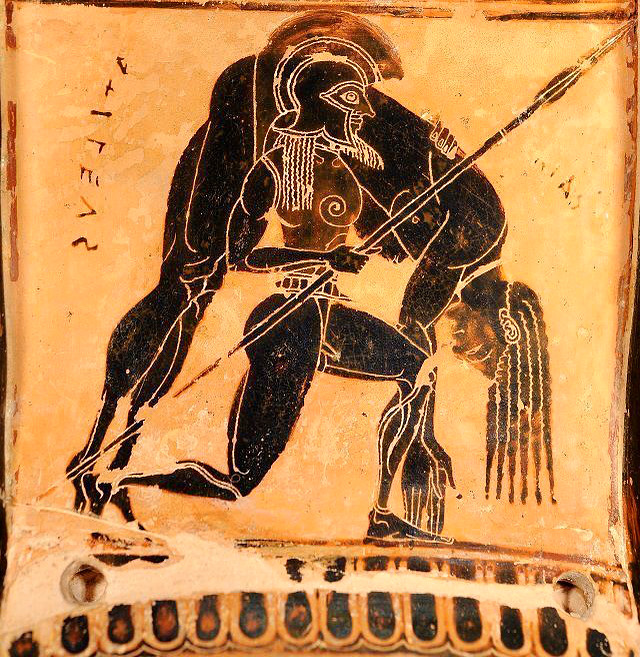The idea of the ‘thanatos kalos’, the ‘beautiful death’, was a crucial part of the Ancient Greek world view, and specifically referred to the death of a warrior on the battlefield at the absolute pinnacle of his vigor, strength and endurance (physical and mental). This type of death meant the corpse retained elements of this masculine beauty and power (hebe).
As in so many matters, Homeric epic was a veritable instruction manual of the beautiful death, particularly the death of Achilles. One of the earliest representations of it is nestled on each handle of the François Krater: a poignant scene in miniature showing Ajax carrying the corpse of Achilles off the battlefield. (Both characters are named by inscription.)


Achilles, even in death is larger than life. His body is nude, stripped of armor to better display his physique, and draped over the shoulder of Ajax. Upright, it would tower over him. The body is unmarred by wounds or grime (quite unlike the mutilated body of Hector…), and the painter uses every visual cue to both emphasise Achilles’ virile beauty and also the pathos of his death. The enormous body is limp, fingertips nearly brushing the ground, and the extraordinary hair hangs vertically down in locks – in well-ordered plaits, shockingly abundant, and not obscuring his peaceful, beardless face.
Florence, Archaeological Museum.



